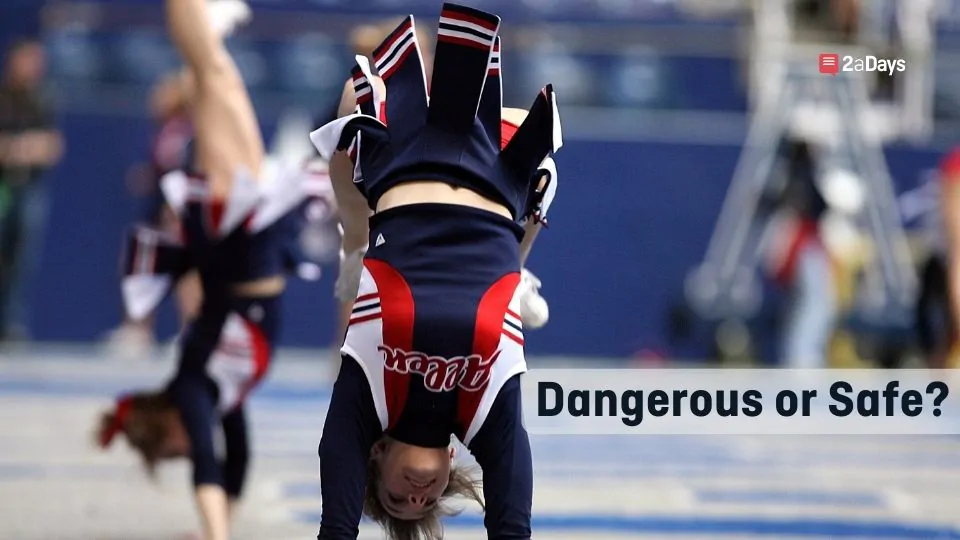Unknown to most, cheerleading is one of the most dangerous sports for athletes to participate in. A plethora of injuries can come from cheer and its high flying stunts. There are restrictions being put in place in an attempt to make the sport safer, but what else can be done to keep cheerleaders safe? And what are the dangers that cheerleaders need to be aware of?
Common Injuries
Most injuries in cheerleading come from stunting which accounts for 42-60% of all cheerleading injuries. These injuries can affect all areas of athletes bodies including the wrists, shoulders, ankles, head, and neck. Most of these injuries are sprains of various body parts with ankle sprains being the most common. Back injuries can also be seen in large numbers from tumbling and other stunts. The twisting and rotation in the air or falling during stunts lead to these kinds of injuries. The final injury we see increasing more and more are concussions. Concussions can have serious long-term effects, especially on young athletes which is why there are steps being put in place to make the sport safer.
Related: DI Athletes Talk about Injuries While Getting Recruited
Trained Coaches
So how do we decrease these cheerleading injuries? The first step is having trained coaches who have experience with cheer. A lot of the time coaches are a member of the school's faculty that has no experience coaching cheer or even done cheer at all. A coach needs to know proper stunt technique and know the symptoms of a serious injury if something does go awry. The new expectation is coaches who are hired should be qualified in the sport and have an extensive knowledge of the sport.
Related: How a Coach Can Ruin Your High School Experience
Conditioning of Athletes
All sports have some sort of training and conditioning so that athletes are at peak physical condition for their respective sport. The same expectation should be seen in cheer. To lessen muscle strains, sprains, and pulls, stretching should be done before every practice, game, and competition. Strength training is also vital for the “bases” on the team, or the people on the floor throwing and catching the flyers. When the bases are stronger there is less of a chance athletes are dropped and back and shoulder injuries for the base decrease as well.
Related: Why Athletes Need Protein: Muscle Repair and Growth
Stunt Restrictions
The final step in making cheerleading a safer sport is stunt restrictions. Since 96% of concussions come from stunts, it's important to place limits on what stunts can be done. Some of the restrictions include the height of the human pyramids and increasing the number of spotters during aerial stunts. Mats should be used during practice and games since injuries can be seen just as much in cheerleading during practice as games.
Safety is always a priority for athlete's regardless of the sport. Cheerleading happens to be one of the most dangerous, so it's important we do everything we can to keep our athlete's safe.
Have an idea for a story or a question you need answered? Want to set up an interview with us? Email us at [email protected]
* Originally published on April 27, 2022, by Grant Osborne







